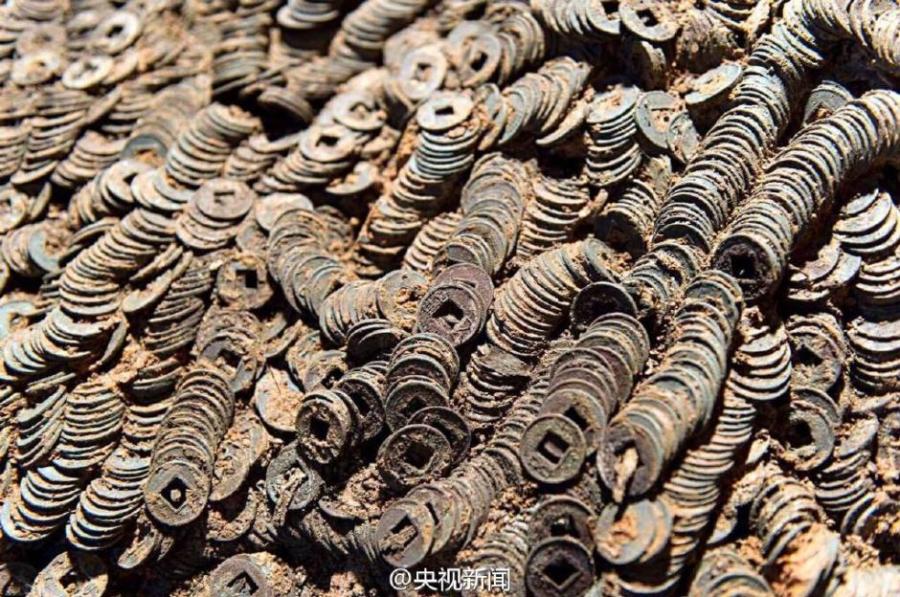260,000 Ancient Bronze Coins Found in Japan
Earlier this year, just outside of Tokyo proper, the largest treasure trove of antique coins ever found in Japan's history was unearthed.
The hoard is contained in a gigantic clay pot now on display in Kumagaya at the Saitama Prefecture's cultural treasury (i.e. national museum).
Historic Hoard of Bronze Coins
In addition to the historical insights they provide, these coins are also a testament to the natural chemical processes of time. The copper in their bronze alloy has oxidized over the past 400 (or more) years.
As a result, the coins have since turned a vibrant blue-green hue due to verdigris. It's the same type of patina that covers the Statue of Liberty. Photographs in news reports from March capture the striking beauty of the color.
The ceramic pot containing the coins, which is more than two feet wide and appears much deeper, likely has been buried for centuries. It was discovered by archaeologists last year at ruins believed to be the site of a medieval samurai pavilion.

Source: ecns.cn
The coins are approximately from the 15th century, during the Ming Dynasty in China. Other coins from the Tang Dynasty (7th century) were found at the same excavation.
They are associated with Chinese dynasties because Japan was one of the last great civilizations to adopt its own coinage system. Instead, the Japanese primarily relied on coins imported from China, even though the island had long been free from domination by the mainland at this point in the medieval period.
A Lesson In Past Coinage
In fact, the image shown above is actually of Chinese coins. Beginning in late antiquity, they came in varieties with either circular or square holes at the center.
The coins were kept together on strings that went through the holes. You can think of them like medieval bank rolls, but each string held 1,000 coins rather than 20 or 25.
One string of 1,000 bronze coins was a common standard of the time. It was worth one ounce of silver. This knowledge of the historical period is what allowed archaeologists to estimate the number of coins without removing them from the gigantic pot: Its lid was inscribed with the number "260."
As you might imagine, this hoard of coins amounted to a tidy fortune in 15th- and 16th-century Japan. By one measure of the era, it represented enough rice to feed 500 people continuously. It had the purchasing power equivalent to hiring 35 laborers or 14 artisans.
Along with other details the archaeological team gleaned, the number of coins implies that the owner was a samurai who ruled a medium-sized fiefdom.
The opinions and forecasts herein are provided solely for informational purposes, and should not be used or construed as an offer, solicitation, or recommendation to buy or sell any product.

Everett Millman
Everett has been the head content writer and market analyst at Gainesville Coins since 2013. He has a background in History and is deeply interested in how gold and silver have historically fit into the financial system.
In addition to blogging, Everett's work has been featured in Reuters, CNN Business, Bloomberg Radio, TD Ameritrade Network, CoinWeek, and has been referenced by the Washington Post.
